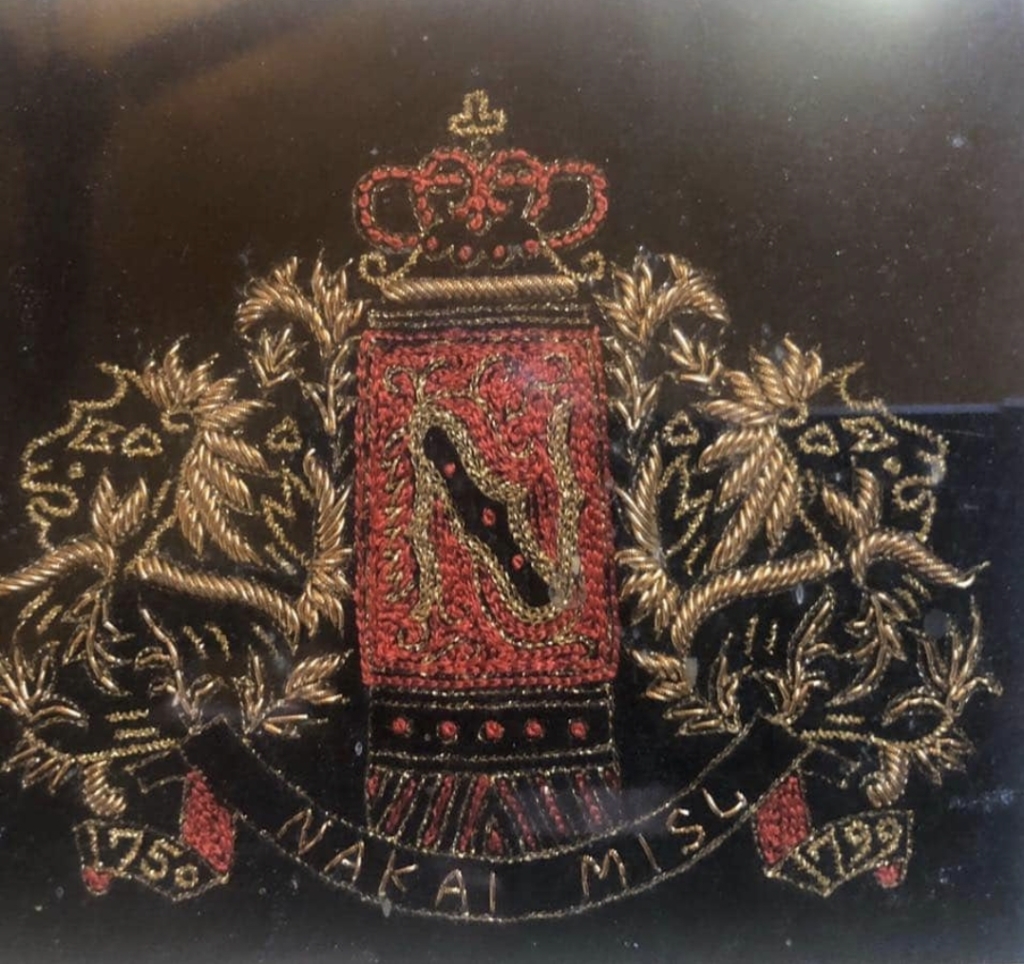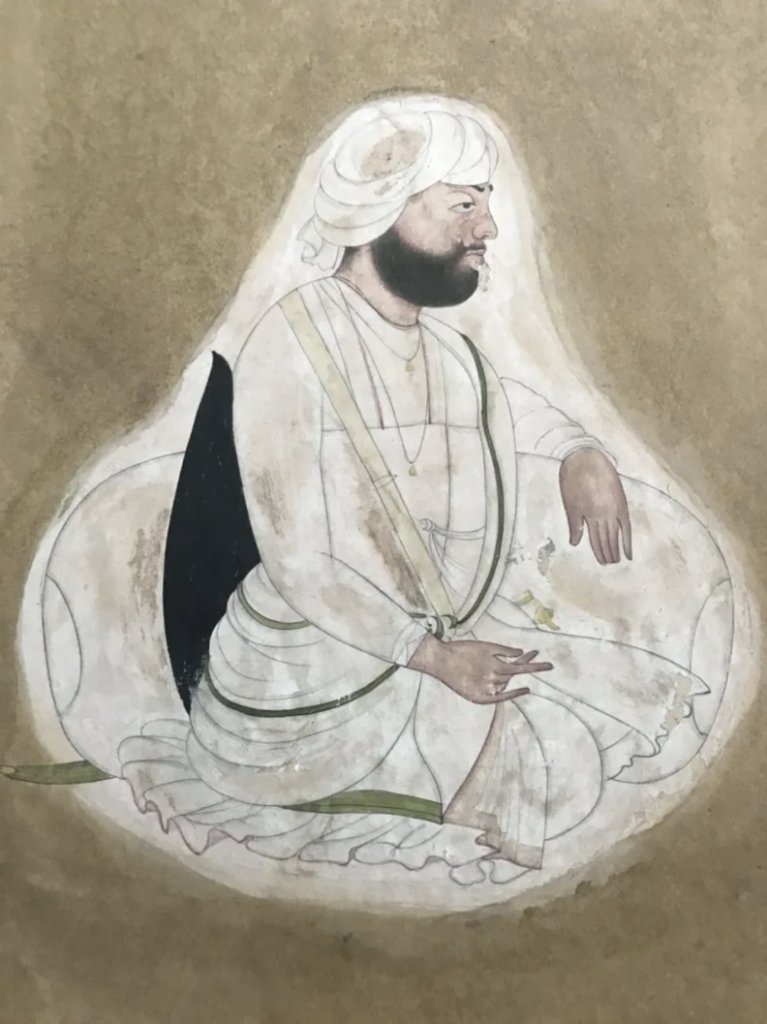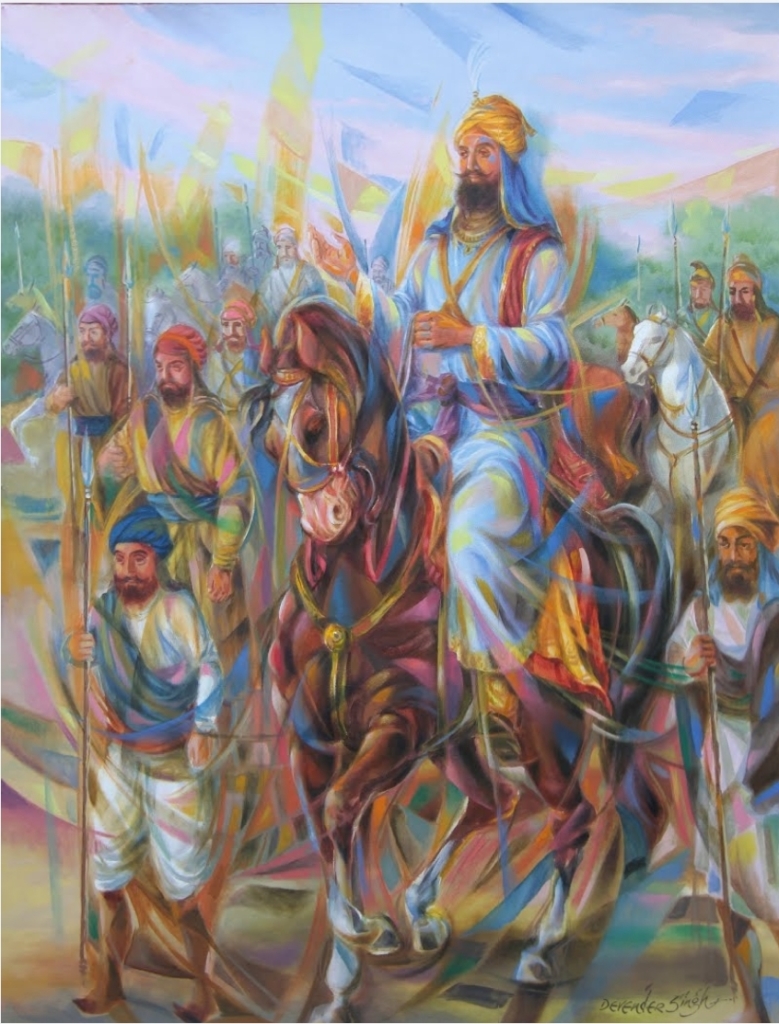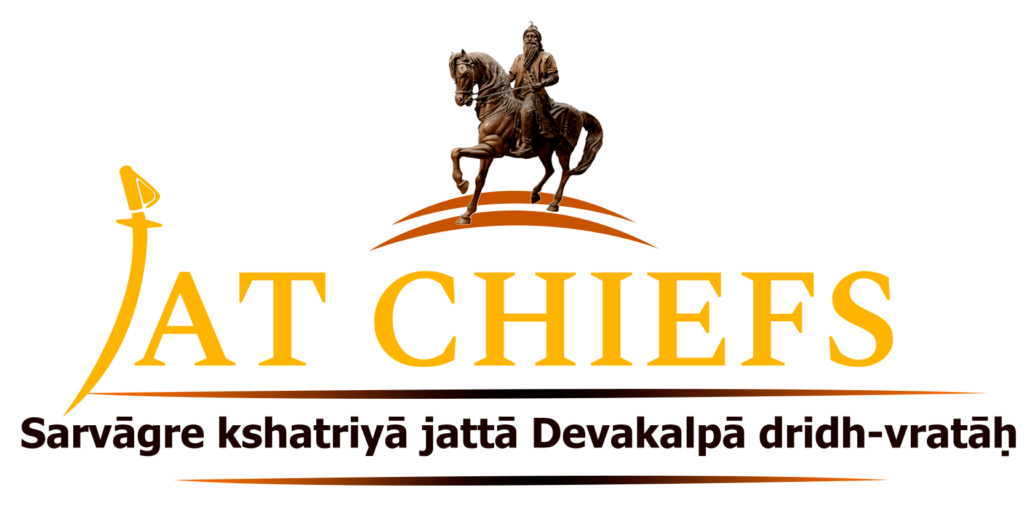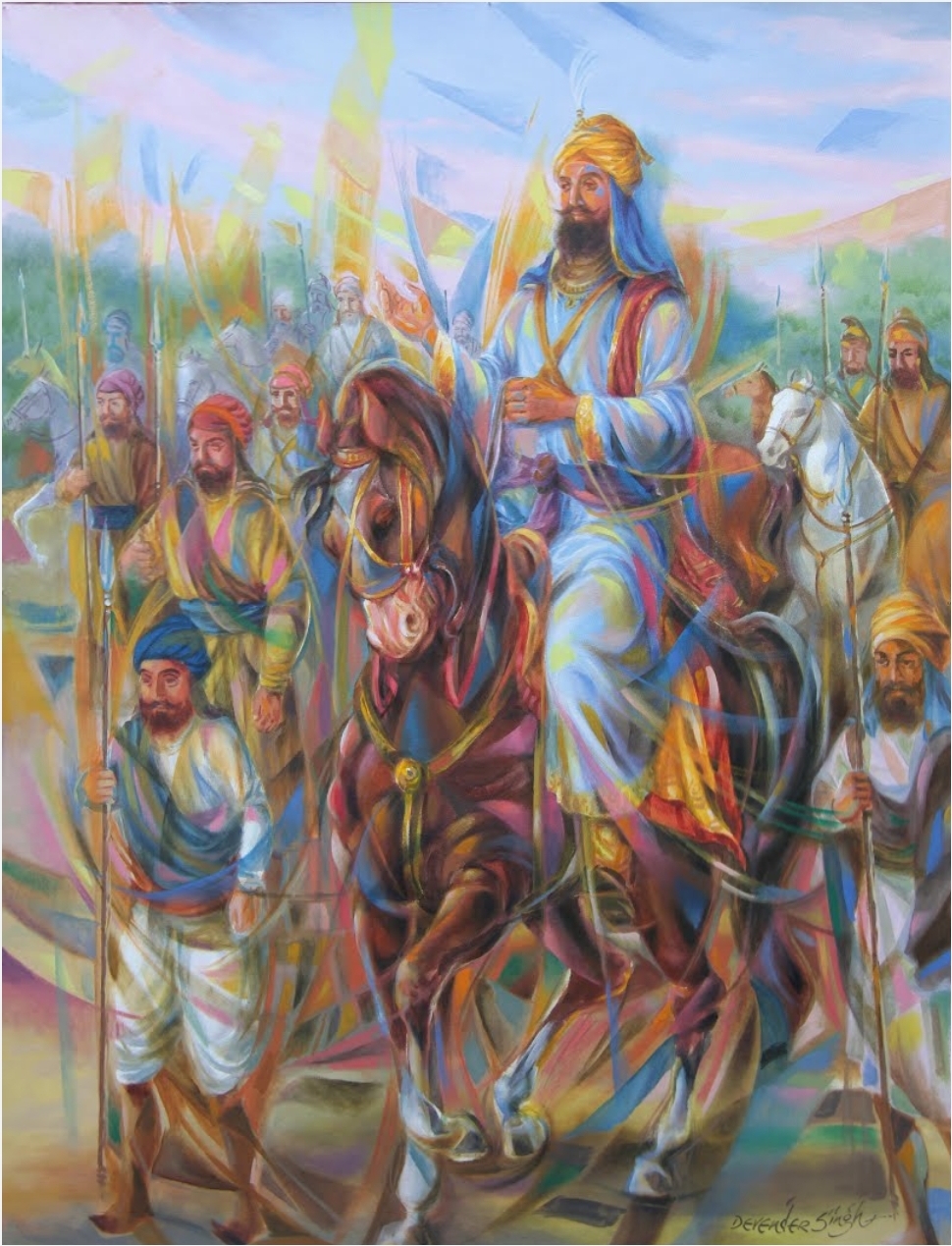History
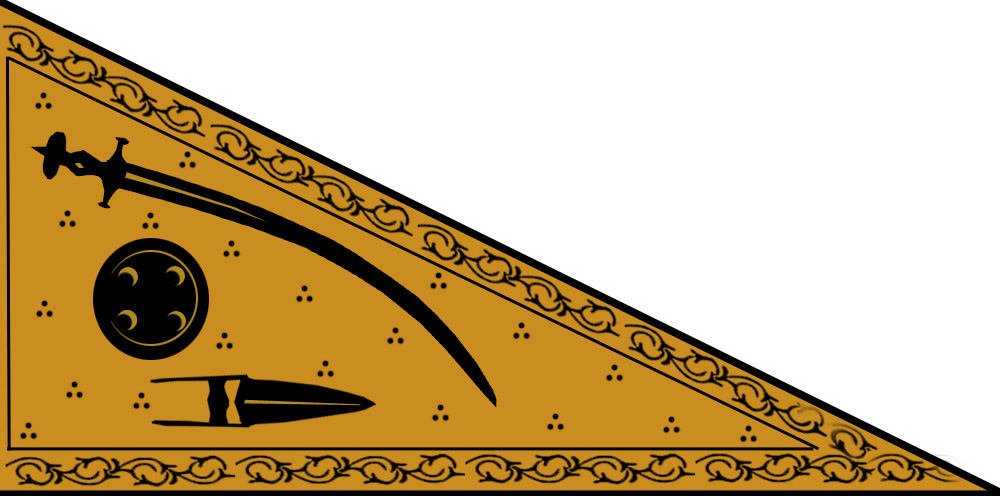

Flag of Nakai Misl
The Nakai Misl was ruled by the Sandhu Jat Dynasty. It was one of the twelve Misls(States) that later became the Sikh Empire. It held territory between the Ravi and Sutlej rivers to the southwest of Lahore in what is now modern-day Pakistan. The Misl fought against the Sials, the Pathans and the Kharals before being incorporated into the Sikh Empire of the Sukerchakia Misl by Ranjit Singh. Before the establishment of the Nakai Misl, this family held the zamindari of the village of Baherwal(65.7 km northeast of Kasur) .
As the legend goes, in 1595, Guru Arjan Dev (1563–1606), the Fifth Sikh Guru, with some of his followers visited the village of Baherwal. However, the holy man was not received with due hospitality. So he passed on to the neighboring village of Jambar Kalan where he lay down on a Charpai (cot) under a shady tree. By this time, Chaudhary Hemraj Sandhu, zamindar of Baherwal, who was absent when the Guru passed through his village, heard of what had occurred and ashamed of his town-men’s inhospitality went to Jambar Kalan and brought the Guru back to his town. The Guru blessed Hem Raj and prophesied that his son and successors, would be great and powerful chiefs. However, it was more than 100 years later that the prophecy was to materialize.
By 1748, when the Mughal power in the Punjab was declining and the Sikhs were on ascendance, Sardar Heera Singh Sandhu (1706–1776) took possession of the lands surrounding his native village, Baherwal and countryside of Kasur which was located in the Nakka country South of Majha Region and his misl took the name of the area they ruled. He took Amrit Sanchar (Sikh Baptism) in 1731. Nakka in Punjabi means border or some sort of a gateway and the Nakka country was located between the Ravi and Sutlej south of Lahore. He also took Chunian from the Afghans but died near Pakpattan in a battle against Sujan Chisti – a devotee of the Shrine of Baba Farid. His companions brought his dead body to Baherwal where it was cremated. Hira Singh Sandhu’s son, Dal Singh Sandhu, was a minor, so his nephew, Nar Singh Sandhu son of Hira Singh Sandhu’s brother Natha Singh Sandhu, succeeded him as leader of the misl.
In 1768, Nar Singh was killed in a battle against the Kharals at Kot Kumaliah and was succeeded by his brother, Ran Singh. Ran Singh fought repeatedly against Kamar Singh, the ruler of Syedwala. Sometime before his death in 1781, he defeated him and captured Syedwala. Sardar Ran Singh greatly expanded the misl’s strength so it became dominant among its neighbours. At its high point under Ran Singh it ruled Kasur, Sharaqpur, Gugera pargana, and the Kharal fort of Kot Kumaliah and could field 2,000 horsemen. Sardar Ran Singh was killed by one of the Kharal tribe . His son, Bhagwan Singh, succeeded him but could not hold his territory against Wazir Singh, the brother of Kamar Singh, who retook Syedwala. Realizing he might lose all of his territory, Bhagwan Singh set up the engagement of his sister, Raj Kaur, to Ranjit Singh, who was the son of Maha Singh, the leader of the Sukerchakia Misl, in order to
gain a powerful ally. In 1785, Maha Singh was facing attacks from Sardar Jai Singh of the Kanheya Misl and called Bhagwan Singh and Wazir Singh to help him, but after they were victorious against Sardar Jai Singh, Maha Singh began to favour Wazir Singh.
Bhagwan Singh and Wazir Singh at war again and Bhagwan Singh was killed in the ensuing battle. Dal Singh, the son of Hira Singh, subsequently killed Wazir Singh in revenge but was himself killed later by a servant of Wazir Singh. In 1789, Gyan Singh, succeeded his brother, Bhagwan Singh (sons of Sardar Ran Singh Nakai). In 1798 he married his sister Raj Kaur to Ranjit Singh who become his second but most favourite queen. Raj Kaur also being the name of one of Maharaja Ranjit Singh’s mothers, she took the name of Maharani Datar Kaur. In 1802, she gave birth to Kharak Singh, the heir apparent of the Sikh empire. Maharaja Ranjit Singh always fondly called her as Mai Nakain.
In 1807, Gyan Singh died and Kahan Singh succeeded him. Before having his estate seized by Ranjit Singh. Sardar Kahan Singh conquered Pakpattan in 1810. Ranjit Singh was an ambitious King and Chief. Having incorporated most of the Sikh Confederacy into his empire, he had been eyeing the holdings of the Nakai Misl. After the death of Sardar Gyan Singh, he invited the new Chief to move and live in the Lahore court, which the proud Nakai Chief steadily refused. Consequently, Ranjit Singh ordered the annexation of his holdings and granted Kahan Singh a jagir at Baherwal then valued at Rupees 15,000. A Jagir at Nankot was also granted to Sardar Khazan Singh, a son of Sardar Ran Singh Nakai, the third chief of the Nakai Misl.
Genealogy
- Sardar Hira Singh, 1st Misldhar of Nakkai misl 1748/1767, born 1706,
he took Amrit Sanchar (Sikh Baptism) in 1731, about the middle of the 18th century, at the time that the Sikhs grew powerful, he took possession of the Nakka country, lying between Lahore and Gogaira,
and it gave its name to his family and to the misl which he commanded, he captured Chunian from the Afghans, and joined the Kanhaiyas and Bhangis in their attacks on the fading Mughal power; married and had
issue. He was killed in a battle for Pakpattan in 1767 and was cremated at Baharwal.
- Sardar Dal Singh, killed in 1790/1791.
- Sardar Nar Singh, 2nd Misldhar of Nakkai misl 1757/1768, he succeeded his uncle to the command of the misl. He was killed in a fight at Kot Kumaliah in 1768.
- Sardar Ran Singh, 3rd Misldhar of Nakkai misl 1768/1781, he
succeeded his brother to the command of the misl, which rose to some strength and importance, and it could raise 2,000 horsemen with camel swivels and some guns, and afterwards they were able to hold Chunian,
part of the Kassur, Sharakpur and Gogaira parganas, and at one time, Kot Kumaliah, the head-quarters of the Kharral tribe; married and had issue. He died 1781.
- Sardar Bhagwan Singh (qv)
- Sardar Gyan Singh (qv)
- Sardar Khazan Singh, he was granted in compensation a jagir at Nankot in 1810, married and had issue.
- Sardar Panju Singh, married and had issue.
- Bibiji Datar Kaur alias Raj Kaur [Mai Nakayan], betrothed about 1784 and married 1798, Maharaja Ranjit Singh of Lahore, and had issue.
- Sardar Bhagwan Singh, 4th Misldhar of Nakkai misl 1781/1789, he succeeded his father to the command of the misl, but was unable to hold on to the territory his father had acquired. He was killed in a quarrel with Sardar Wazir Singh Syadwala in 1789.
- Sardar Gyan Singh, 5th Misldhar of Nakkai misl 1789/1807, he
succeeded his brother to the command of the misl, married and had issue. He died 1807.
- Bibiji Ratan Kaur, married Sardar Ram Singh Taragharia.
- Sardar Kahan Singh (qv)
- Bibiji Dya Kaur, married Sardar Amar Singh Veglia.
- Sardar Kahan Singh, 6th Misldhar of Nakkai misl 1807/1810 and Jagirdar of Bahrwal 1810/1872, all his familiy's possessions were seized by Maharaja Ranjit Singh in 1810, who granted him in compensation a jagir at Bahrwal, he was appointed a jagiri Magistrate at Bahrwal in 1860, married and had issue. he died 1872.
- Sardar Hukum Singh
- Sardar Chattar Singh, married and had issue, three sons and two daughters. He died 1857.
- Bibiji Isa Kaur, married Kanwar Nihal Singh, son of Sardar Jaggat Singh Mann of Mogalchak.
- Bibiji Thakar Kaur, married Amar Singh, son of Commandant Diwan Singh.
- Sardar Ranjodh Singh (qv)
- Thakur Singh, died 1878.
- Partab Singh, born 1845, married and had issue.
- Autar Singh, died 1905.
- Hazura Singh, married and had issue.
- Buta Singh
- Autar Singh [alias Khuda Bakhsh], he converted to Islam, he joined the rebels at Multan in 1848, married and had issue. He died 1879.
- Bibiji Partab Kaur, married a son of Sardar Fateh Singh Taragharia.
- Labh Singh. born 1842, married and had issue.
- Bibiji Mahtab Kaur, married Sardar Ganda Singh Kulbajwa.
- Lehna Singh [alias Ghulam Qadir], married and had issue. He died 1881.
- Sardar Ishwar Singh [alias Abdul Aziz], he converted to Islam under the influence of a dancer, Zaildar, whom he eventually married and had issue, two sons.
- Khan Bahadur Din Muhammad, an Extra Assistant Commissioner;
- Muhammad Akbar, Zaildar and Honorary Magistrate, life member of the Prisoner's Aid Society,
- generation/s
- Sardar Muhammad Arif Nakai Sandhu, M.L.A. (Punjab) 1985/1996 for four consecutive terms, Minister for Revenue, Minister for Forests, Minister for Livestock & Dairy Development Department, Minister for Industries and Mineral Development, Chief Minister of Punjab [13.9.1995] - [3.11.1996], married and had issue. He died 1st March 2000 was buried in his home village, Adhen.
- Sardar Muhammad Asif Nakai, born 28th August 1960 in Kasur, educated at the University of the Punjab, Lahore (1983), Nazim, Tehsil Council Pattoki 2001/2002, former Federal Minister of State for Housing and Works
- Sardar Pervaiz Hassan Nakai
- Sardar Atif Nakai, current Tehsil Nazim of Pattoki Tehsil.
- Daughter, married Sardar Muhammad Talib Nakai
- Sardar Muhammad Arif Nakai Sandhu, M.L.A. (Punjab) 1985/1996 for four consecutive terms, Minister for Revenue, Minister for Forests, Minister for Livestock & Dairy Development Department, Minister for Industries and Mineral Development, Chief Minister of Punjab [13.9.1995] - [3.11.1996], married and had issue. He died 1st March 2000 was buried in his home village, Adhen.
- Bibiji (name unknown) Kaur, betrothed to Sardar Amar Singh, Provincial Darbari and Zaildar (see Nishanwalia misl)
- Sardar Udham Singh (qv)
- Narayan Singh, tahsildar, married and had issue. He died 1910.
- Sardar Gurdyal Singh (qv)
- Sardar Hardyal Singh (qv)
- Sardar Balwant Singh (qv)
- Sardar Harmohan Singh (qv)
- Kanwar Manmohan Indarpal Singh, born 1921.

